Social Media Campaign Calls for Fashion Supply Chain Transparency


If you see people wearing their clothes inside-out today, don’t be alarmed. In support of Fashion Revolution Day, tens of thousands of people around the world are taking to social media today, snapping selfies, tagging brands and asking them “#whomademyclothes. In so doing, they’re inviting consumers to question the origins of what they wear and calling on clothing brands to take full responsibility for their supply chains.
“Ninety-five percent of brands don’t know where their materials come from, and 75 percent don’t know where all their clothes are cut and sewn,” said Maxine Bédat, co-founder of slow fashion brand Zady and U.S. co-chair of Fashion Revolution Day. “It’s absolutely a brand’s responsibility to know where their product is sourced. This is about pushing brands to have an answer to what should be a simple question.”
In its second year, Fashion Revolution Day is a globally-organized movement that aims to raise awareness of the true cost of fashion and propel the global apparel industry to innovate toward a more sustainable future.
With participants from 71 countries joining the movement in a variety of ways – some have organized panel discussions, workshops and other events leading up to today and others have simply sent a tweet – the day is a reflection of the multi-sector collaboration that will be needed to successfully address the social and environmental issues along fashion’s entire value chain.
A truly global conversation, Fashion Revolution Day has galvanized everyone – farmers to factory workers, brands, retailers, consumers and nonprofits, from Spain to Zimbabwe – on sites such as Twitter, Facebook and Instagram to call for systemic reform in fashion supply chains. Companies as diverse as Eileen Fisher, Patagonia, American Apparel, Maiyet and Zady are partaking in the discussion.
The day also marks the two-year anniversary of the Rana Plaza factory collapse in Bangladesh, a tragedy that has spurred a global conversation about apparel industry manufacturing practices.
“We’re using that tragedy to change the industry, to shed light and bring some transparency to what has become a really hidden and secretive industry,” Bédat said. “If consumers demand transparency and demand that their hard-earned dollars are going to treating people fairly, brands will actually do the work to make that happen.”
To place a human face on the sometimes nebulous apparel supply chain, Fashion Revolution Day organizers have profiled garment factory workers from around the world and shared their stories on its website. Country organizers and some brands have also taken snapshots of factory workers and shared them on social media.
You can join the #FashionRev conversation online today by turning your clothes inside out and asking brands #whomademyclothes.
Image credit: Pexels
Is the Public Etsy Still Part of the Sharing Economy?
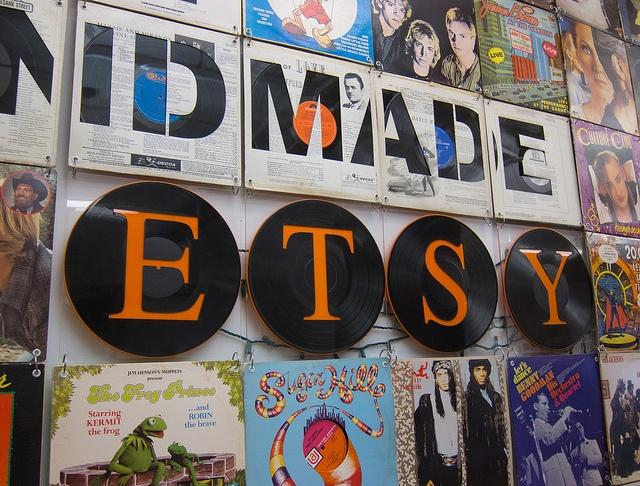

Etsy's IPO took Wall Street by storm last week. The conversation was peppered with questions about whether or not a company that claims to be “a mindful, transparent and humane business” could succeed on Wall Street, a space where these adjectives are rarely used.
Yet, this is not the question I’ll ask today. Instead, I’ll focus on whether or not Etsy, the person-to-person online marketplace for all things handmade, is still part of the real sharing economy.
It’s not that the first question is not interesting, but that I feel it belongs to the last decade, not to 2015. We already have many public companies with far more progressive social and environmental agendas than Etsy, like Unilever and Marks & Spencer, that are trying to show investors the business case for sustainability. So, is it really such a big deal?
It’s true that B corps are still quite rare on Wall Street, as well as companies that make sustainability their strategy, not just a department. But let’s face it: There’s a good chance Etsy will have to play by the market’s rules no matter how mindful and humane it is. This is just the nature of the beast, aka Wall Street, as we could learn this week: Although Chipotle reported great quarterly results, its share price went down by more than 5 percent because investment analysts “had been expecting stronger comparable sales.”
Therefore it’s not really about who will change – Wall Street or Etsy, but to what degree Etsy will need to adjust itself to fit the market’s standards and expectations.
This assumption brings me to the question I find more interesting (other than why Etsy actually needed to go public in the first place): Is Etsy still part of the real sharing economy?
Is a public Etsy really part of the sharing economy?
This question came to mind after reading “The sharing economy is bullsh!t. Here’s how we can take it back” on Grist, in which the author, Sam Bliss, argued that companies like Airbnb, Uber, Lyft and Taskrabbit are not really part of the sharing-economy space. Bliss suggested that these companies are involved in share-washing as they’re nothing but a rental broker, unregulated cab services, and a service that lets well-off people pay less well-off people to do their chores without providing benefits and job security.
To support his argument Bliss quoted Doug Henwood, who wrote earlier this year on The Nation: “The sharing economy is a nice way for rapacious capitalists to monetize the desperation of people in the post-crisis economy while sounding generous, and to evoke a fantasy of community in an atomized population.”
So, we have a pretty clear idea who the sharing economy phonies are. But what is actually the real sharing economy? According to Bliss, the real sharing economy allows humanity “to consume less, hopefully shrinking our economy’s voracious appetite for materials and energy.” Sharing, he added can also “help us achieve economic degrowth in consumption and production — and the wastes that come with them, like carbon emissions — while maintaining quality of life, or even improving it with more social interactions and stronger community relationships.”
Reading these definitions, I wasn’t sure if Etsy could be considered a part of the real sharing economy even before it became a public company: On one hand, it’s not reducing consumption, but on the other hand it favors unique, handmade goods over mass-produced, generic ones. In addition, Etsy supports “retailers and suppliers that have responsible and sustainable policies toward their employees, their communities and the environment” and maybe even contributes to greater social resilience.
So, which is it? And this is even before we get into the IPO – what does it mean that the company is public now? According to Bliss, “A real sharing enterprise isn’t driven by profits for shareholders." But Etsy makes it more complex, claiming, “The success of our business model is based on the success of our sellers. That means we don’t have to make a choice between people and profit.”
The bottom line
I’m not sure what Bliss’s bottom line about Etsy is, but to me it’s pretty clear that the case of Etsy shows the ineffectiveness of using purity criteria to exclude from the sharing economy anyone showing any signs of interest in making money out of it.
It’s not that I don’t want to see more worker cooperatives and more profit-sharing in the sharing economy – as someone who experienced life in a kibbutz, I’ve learned to see the value in platforms that aspire to increase the well-being of everyone, not just the 1 percent.
However, I also want to see the sharing economy becoming a mainstream movement, as change without scale has very little chance to make any difference. Therefore I believe in the benefits of framing the sharing economy as a big tent, where you can find side-by-side nonprofits, for-profits, worker cooperatives and public companies, where all of them “create 'markets in sharing' by facilitating exchanges.”
It doesn’t mean, though, that we should give a free pass to anyone who wants to join this space. As I’ve written here in the past, values do matter and companies that don’t exercise basic ones like humanness should be outside of this tent, not inside.
So, what about Etsy? I believe the company has rightly earned its place in this tent as a “humane business,” and I hope that becoming a public company won’t change that.
Image credit: Scott Beale, Flickr Creative Commons
Grave Threats Face World's Seventh Largest Economy
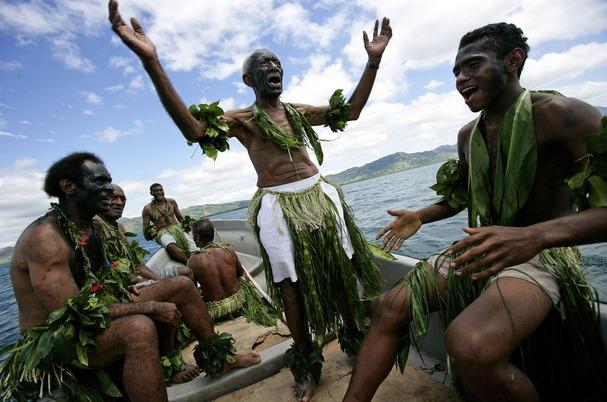

Can we put a price on the world's oceans? Covering over 70 percent of our planet's surface and essential for its basic functioning, the idea may seem ludicrous at first. Yet, given the growing amount of pollution and waste we dump into the oceans and our ongoing over-exploitation of seafood stocks, we've come to the point where leading ocean scientists and policymakers believe putting an economic value on the world's ocean resources is critical.
In a new report entitled Reviving the Ocean Economy: A Case for Action – 2015, World Wildlife Fund International, the University of Queensland's Global Change Institute and the Boston Consulting Group argue that the economic value of the world's oceans “rivals that of the world's largest economies.”
"The value of key ocean assets is conservatively estimated ... to be at least $24 trillion,” the research partners stated in the report, released on April 23.
The ocean would rank seventh on a ranking of the world's top 10 economies, yielding $2.5 trillion worth of goods and services annually. Unfortunately, ocean resources “are eroding rapidly,” according to the report. In addition to shining a light on the pressures, threats and costs to ocean resources, the research partners offer recommendations for sustaining the oceanic resource base and marine ecosystems.
The ocean economy: Sinking fast
As the partners summarize in a press release: “Reviving the ocean economy reveals the sea’s enormous wealth through assessments of goods and services ranging from fisheries to coastal storm protection, but the report also describes an unrelenting assault on ocean resources through over-exploitation, misuse and climate change.”
“The ocean rivals the wealth of the world’s richest countries, but it is being allowed to sink to the depths of a failed economy. As responsible shareholders, we cannot seriously expect to keep recklessly extracting the ocean’s valuable assets without investing in its future,” added Carlo Lambertini, director general of the World Wildlife Fund.
Fisheries collapse, destruction of mangroves, and loss of coral reefs and seagrass beds portend continuing degradation and loss of critical ocean resources, the report highlights. Compounding these factors is climate change and associated ocean acidification, which the report authors conclude “is a leading cause of the ocean’s failing health.”
They also highlight that -- at the current rate of warming -- coral reefs, which “provide food, jobs and storm protection to several hundred million people, will disappear completely by 2050.”
Fastest change in millions of years
Fundamental conditions in the world's oceans are changing more rapidly than at any other period of time in millions of years, the research partners add. That heightens our need to better understand the workings of ocean ecosystems, including more comprehensively and accurately assessing the economic value of ocean resources.
“Being able to quantify both the annual and asset value of the world’s oceans shows us what’s at stake in hard numbers; economically and environmentally,” said Douglas Beal, partner and managing director of the Boston Consulting Group. “We hope this serves as a call for business leaders and policymakers to make wiser, more calculated decisions when it comes to shaping the future of our collective ocean economy."
An eight-point plan for reviving the ocean economy
Despite the losses and ongoing degradation, it's not too late to reverse the tide of threats to sustainable ocean ecosystems and economic activity, the research partners say. In the report, they present “an eight-point action plan that would restore ocean resources to their full potential.”
Incorporating ocean recovery into the United Nations' strategic Sustainable Development Goals (SDGs) would be one key, “time critical” step the community of nations could take, they say. Similarly, taking stronger global action to mitigate and adapt to climate change and “making good on strong commitments to protect coastal and marine areas,” would be major steps forward.
“The ocean feeds us, employs us, and supports our health and well-being, yet we are allowing it to collapse before our eyes," Lambertini said. "If everyday stories of the ocean’s failing health don’t inspire our leaders, perhaps a hard economic analysis will. We have serious work to do to protect the ocean starting with real global commitments on climate and sustainable development."
*Image credits: WWF International
Twitter Chat RECAP: Kimberly-Clark & World Wildlife Fund, #RespFibers
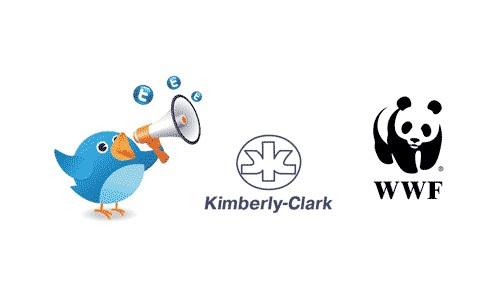

Today, Kimberly-Clark, World Wildlife Fund and TriplePundit came together for a special Twitter Chat about responsible fiber sourcing procedures - at #RespFibers.
In 2009, Kimberly-Clark embarked on a journey to conserve and protect natural forest resources around the world. This journey included partnering with Greenpeace to develop responsible fiber sourcing procedures, and working with the Forest Stewardship Council and World Wildlife Fund to ensure fiber sourcing came from responsibly-managed forests.
One successful step in this journey was joining the WWF’s Global Forest and Trade Network, a move the company hoped would engage stakeholders in an effort to turn the global marketplace into a force for conservation of valuable and threatened forests. Now Kimberly-Clark is taking this journey one step further with the introduction of non-tree fiber sourcing.
This Twitter Chat showcased how Kimberly-Clark and WWF have worked together to create thought leadership in responsible fiber sourcing.
We began the hour-long chat with a Q&A session with Nick Aster of TriplePundit. We then opened the "floor" to questions from the #RespFibers audience and were able to address over a dozen additional interesting points! Topics covered included the following, and more:
- What the WWF’s Global Forest and Trade Network is.
- How WWF and Kimberly-Clark have worked together to create awareness around responsible fiber sourcing.
- Why is Kimberly-Clark exploring non-tree fibers.
- What other organizations should know about working with WWF.
- What the next responsible fiber sourcing goals are focused on.
FEATURED GUESTS:
- Linda Walker (@BalanceWWF) -- Director, Global Forest & Trade Network-North America Program, World Wildlife Fund
- Iris Schumacher (@KCPNorthAmerica) -- North America Sustainability Marketing Leader, Kimberly-Clark Professional
- Nick Aster (@NickAster) -- TriplePundit Founder and Publisher
- Marissa Rosen (@MarissaR1) -- TriplePundit Director of Social Media
- Mary Mazzoni (@Mary_Mazzoni) -- TriplePundit Senior Editor
Green Building Should Start With a Green Supply Chain


By Graham Sprigg
A recent report, Global Green Building Market Outlook 2020, anticipates that the global green building market should grow at a compound annual growth rate of around 13 percent between 2015 and 2020. But it is worth wondering how the building sector can be made even greener.
A major report on the building and construction sector, Greening the Building Supply Chain by the United Nations Environment Program’s Sustainable Buildings and Climate Initiative (UNEP-SBCI), finds that “greening the building supply chain is a necessary precondition for up-scaling delivery of green buildings and realizing the associated sustainability opportunities on a commercially-viable and widespread basis.”
The scope of the report extends beyond the well-established benefits associated with green buildings themselves (such as energy efficiency). It is intended to help stakeholders better understand resource use in the building and construction supply chain as a whole, and to identify opportunities to promote greater resource efficiency in the sector as well as and contribute toward wider socioeconomic goals.
For this purpose, the report introduces a simplified representation of the building supply chain comprising two key dimensions: (i) the building delivery and management process and (ii) priority material supply chains.
The building delivery and management process describes the way buildings are designed, delivered and occupied. The simplified process consists of five stages: concept definition, design, construction, in-use and end-of-life. For each stage except end-of-life, the report describes the main scope, stakeholders and barriers to greening the supply chain, then reviews potential green interventions, which are also illustrated through case study examples.
For 10 priority material supply chains (aluminium, brick, cement, flat glass, mineral wool, plasterboard, polystyrene, polyurethane, steel and timber), the report introduces the concept of a ‘heat map,' developed by Karlsruhe Institute of Technology and University of Kassel, to examine the relative environmental impacts and the potential for reduction.
The ultimate outcome of this work is a set of recommendations to inform future work programs of UNEP-SBCI and partners. The identified recommendations also served to inform the development of the new Sustainable Buildings and Construction (SBC) program which is co-led by UNEP, and part of the 10 Year Framework of Programs (10YFP) on Sustainable Consumption and Production.
The SBC program was launched on April 20 in Nairobi, Kenya, and aims to foster a clearer understanding and appreciation of sustainable buildings among relevant stakeholders and to identify the knowledge, resources and incentives required to build, maintain and use them. It also aims to ensure that structures are healthy to live and work in; that they use land, energy, water and other key resources sustainably; that they respect environmental limits and are responsive to climate change; and that they contribute to the social and economic development of the communities in which they stand.
Image credit: Flickr/kalmyket
Graham Sprigg is the founder of IMS Consulting, a Bristol-based organisation specialising in helping businesses to develop sustainability strategies and engage and communicate with stakeholders. He works extensively in the construction sector, delivering Sustainability and Corporate Responsibility Reports, Roadmaps and communications programmes.
For further information, please contact Graham: [email protected]; +44 (0)117 325 0612.
A Commitment to Philanthropy Begins at Home
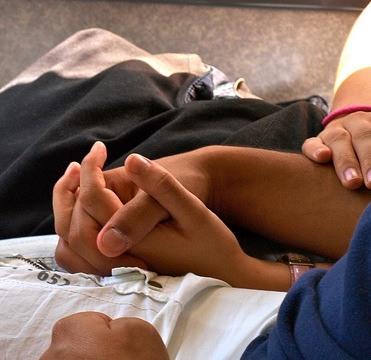

By Jill Iscol
The 2014 World Giving Index found that Americans rank first in the world when it comes to helping strangers in need of assistance. That doesn’t surprise me. Since becoming involved in the philanthropy world more than 25 years ago, I have met countless generous people who live their lives with others in mind.
Where does this awareness of others start? What are the personal experiences that shape one’s commitment to fairness, social justice and equality of opportunity?
In thinking about these questions and talking with social activists from every walk of life, I have come to believe that charity, in its broadest meaning of goodwill and love of humanity, often begins at home.
Early on in my life I began to understand that I had the good fortune of being born in a time and place and of parents who afforded me opportunities not necessarily available to others. My sisters and I enjoyed a comfortable, middle-class upbringing in an upwardly mobile community on Long Island. But along with the perks of that lifestyle came a clear message from my parents: that from those to whom much has been given, much is expected.
As chairman of the board of an orphanage not far from where we lived, my mother would, on occasion, bring one of the children home to spend the weekend with us. We knew they didn’t have as much as we had, but we viewed them as new friends, playmates and equals. We were following our parents’ lead.
The older I got, the more apparent it became that some children had a leg up and others didn’t because of an accident of fate -- what has been called “the birth lottery” -- dividing us by class, race, ethnicity, gender or physical differences.
In the 1950s, when African-Americans began migrating in large numbers to the North, lured by the prospect of jobs and a better life, my mother hired housekeepers from the coal-mining region of West Virginia. They were wonderful, warm, hardworking women. I spent an enormous amount of time with them and considered them family. So, it was an awakening moment for me, and a confusing one at my innocent age, to discover that these women had children of their own whom they loved and had had to leave behind so they could earn money to support them. It is the same story told today in the plight of Mexicans, South Americans, Filipinos and other migrant groups.
My father gave back mainly in an active commitment to Jewish causes, especially those which strengthened and secured Israel. But his generous spirit reached beyond the temple doors. When he died in 1993, we were comforted by an outpouring of love and emotion from friends and strangers alike -- people whose lives he touched as he went about his daily routines. They were from every chapter and every piece of his life; from garage attendants and shopkeepers, to doormen and waiters at the restaurants he frequented, to college friends and the people who worked with him and for him in business. He wasn’t just interested in their welfare; he tended to it.
That was the belief my parents tried hard to impart: that no matter where you came from or what your station in life, you deserve respect and an equal chance to develop your potential and have a fulfilling life; is up to those blessed with more to help those with less, not from a sense of noblesse oblige but from a genuine identification with each person’s humanity.
I heard that call-to-action again in high school in a eulogy for President John F. Kennedy written by Ruth Klein, one of our most respected teachers. The death of the young president, she said, was at once the salty taste of “the tears for human beings” of which the poet Virgil wrote, and a reminder that the old teach the young, and trust that the young will learn to light the fire that may kindle a better world.
In 1989, my husband and I started a small family foundation, the Iscol Family Foundation, which has since become the IF Hummingbird Foundation.
It is, I believe, built on the groundwork laid by my parents and other adult role models and it has been a life-changing experience for me. Early on, I was inspired by meeting and working with social change activists like Jacqueline Novogratz, Margot Strom and Jonah Edelman.
Today, when the world is exploding with negative energy, when we’re confronted every day with images of frightening brutality and violence, I am heartened and even exhilarated by a new generation of social idealists. They come from both privilege and poverty, but they share a common ideal. Happily, they include my own adult children who are acting on their own passions and ideas for changing the world. My son, Zach, a veteran of the Iraq war, is deeply involved in helping other veterans and their families with his organizations, The Headstrong Project and HirePurpose. He is helped by my daughter, Kiva, who is also working on the family foundation’s Hearts on Fire Visionaries campaign to enlist global talent to tackle the world’s most pressing problems.
My husband, Ken, and I are so gratified to see that our family’s belief in lifting up the human community has been carried through us to the next generation.
Along with my children, all of these extraordinary visionaries have enriched my life and bolstered my optimism about the future of our society and our planet.
In 2008, when the world seemed on the brink of financial collapse and people everywhere were feeling helpless and despairing, they were the reason I remained full of hope. They signaled the beginning of an exciting, new movement of engaged, compassionate citizens who are helping to build a more humane society.
They may not be famous but in my book they are stars and they deserve to be as well known as Beyonce and Taylor Swift. Four years ago, to spread the word of their good work that it might inspire others, I wrote "Hearts on Fire: Stories of Today’s Visionaries Igniting Idealism Into Action." In doing so, I was reminded of Ruth Klein’s words more than 50 years ago, “Trust that the young will learn to light the fire that may kindle a better world.” I believe they are doing it.
Image credit: Flickr/Simon Cocks
Jill Iscol is President of the IF Hummingbird Foundation, a family foundation established in 1989 to support domestic and international efforts to strengthen democracy and reduce the social, economic, and educational inequalities that threaten it.
For the past two decades Jill has supported and participated in numerous organizations and has developed an expertise in identifying visionary leaders and programs at early stages of their development. She fosters their advancement by providing seed capital and guidance enabling them to become stable, sustainable and successful organizations, impacting lives around the globe. Additionally, she launched the Hearts on Fire, a community and platform to showcase inspiring social entrepreneurs and help inspire young people to pursue careers in service and cause.
Deutsche Bank hit by record $2.5bn penalty


Deutsche Bank (DB) has been fined $2.5bn (£1.66bn) by US and UK regulators for trying to manipulate the Libor and Euribor inter-bank rates.
The record penalty - $2.1bn by US regulators and £227m by the UK's Financial Conduct Authority - is due to the fact that DB also tried to mislead regulators and could have hampered investigators.
Georgina Philippou, the FCA's acting director of enforcement and market oversight, said in a statement: "This case stands out for the seriousness and duration of the breaches by Deutsche Bank - something reflected in the size of today's fine.
"One division at Deutsche Bank had a culture of generating profits without proper regard to the integrity of the market. This wasn't limited to a few individuals but, on certain desks, it appeared deeply ingrained."
"Deutsche Bank's failings were compounded by them repeatedly misleading us. The bank took far too long to produce vital documents and it moved far too slowly to fix relevant systems and controls," she said.
The bank said in a statement "disciplined or dismissed individuals" involved and tightened governance controls and that it deeply regretted the matter. US regulators have demanded the dismissal of a further seven senior individuals still employed.
The misconduct involved at least 29 Deutsche Bank individuals, including managers and traders, mainly based in London but also in Frankfurt, Tokyo and New York. It took place between 2005 and 2009.
NRDC Analysis Finds Data Gaps in Fracking Reports

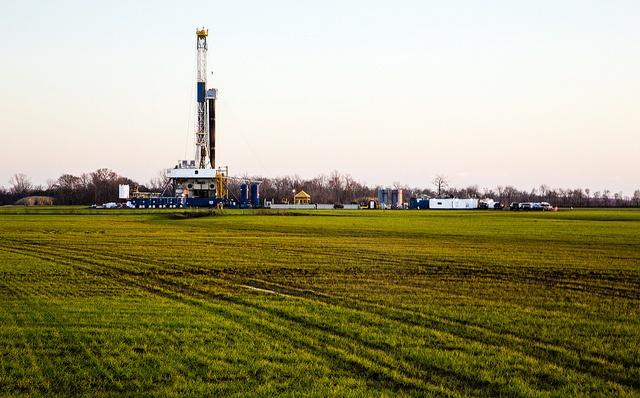
Hydraulic fracturing, better known fracking, is a process used to extract oil and gas from shale by injecting a combination of sand, water and chemicals. It’s a practice that the Natural Resources Defense Council (NRDC) describes as “dirty” in an issue paper on fracking.
Shale gas is big business in the U.S. There are only three countries producing shale gas through fracking on a commercial scale, according to World Watch. The U.S. is at the top spot on the list, followed by Canada and China. Shale gas production accounts for a “significant share” of natural gas production in the U.S. By the end of 2013, shale gas production surpassed the daily output from non-shale wells, becoming the “dominant source.” Although conventional production is declining, the U.S. remains a leading nation in natural gas production because of its shale gas production.
The sheer volume of fracking going on in the U.S. is a concern. NRDC and FracTracker Alliance (FTA) launched an investigation of the publicly provided information on oil and gas company violations. What they found is that state and federal agencies aren’t providing information on violations “in a transparent, easily accessible or comprehensive way.” Information on oil and gas company violations is only publicly accessible in three states (Colorado, Pennsylvania and West Virginia), although 36 states have active oil and gas development. However, no state grants public access to the basic set of data parameters that NRDC and FTA identified as key.
The organizations searched the public data from Colorado, Pennsylvania and West Virginia for the public records of 68 of the largest oil and gas companies in the U.S. At the end of 2011, those 68 companies held leases covering at least 141 million net acres, which is over 6 percent of the country and about the size of California and Florida combined. By analyzing thousands of violations of state law from 2009 to 2013 in the three states, they found that regulators don’t automatically inform either local officials or the public when a company violates the law.
What they also found is that in most cases states don’t notify a landowner when a violation has occurred on their property or notify neighboring landowners when a violation occurs that could affect their property. Many violations aren’t recorded at all for one of two reasons: Regulators aren’t aware, or they choose not to document the violations. That’s an appalling oversight.
Fracking wastewater in California contains high levels of human carcinogen benzene
The Los Angeles Times published an analysis of California fracking wells in February and found high levels of benzene, a human carcinogen. In 2013, the state of California required oil companies to test wastewater extracted from oil wells. Data obtained from the first year of testing found “significant” concentrations of benzene, sometimes at levels thousands of times greater than what state and federal agencies deem safe. On average, benzene levels were 700 times greater than federal standards.
What data is reported to state regulators is likely insufficient and probably doesn’t account for all of the benzene in fracking flowback. “Many operators failed to comply with reporting requirements ... at least 150 reported some results but either failed to test for or provided no data for benzene and a host of other dangerous contaminants,” the Los Angeles Times reported.
Policies are needed to fix the data gap
The NRDC recommends that policies are needed to fix the lack of data reported to state and federal agencies on fracking wells. Policies must ensure that regulators disclose key information to the public, hold violators accountable and keep repeat offenders out of communities.
The lack of data available means that communities are not being protected. It’s time for state and federal agencies to take a good, hard look at what oil and gas companies are not reporting.
Image credit: Daniel Foster
Turkey Continues to Deny Armenian Genocide

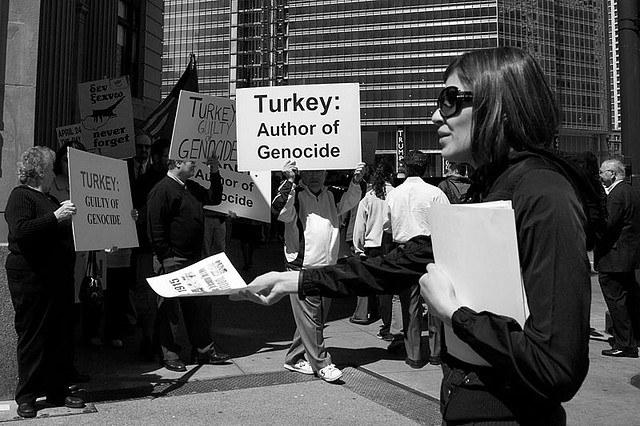
The Turkish government continues to deny that what happened 100 years ago to Armenians, when 1.5 million lost their lives, is genocide. Their denial campaign has ties to former U.S. congressman Dick Gephardt. His consultancy group, the Gephardt Group, had a contract with a Turkey and was paid $1.4 million a year to lobby for Turkey in Washington.
Yet as a U.S. House member, Dick Gephardt supported the recognition of the Armenian genocide. Clearly, that's now a thing of the past.
The California Courier, a weekly newspaper published for Armenians in English, recently reported that the Gephardt Group filed documents with the Justice Department under the Foreign Agent Registration Act which show that the former congressman has been lobbying congressional members against resolutions on the Armenian genocide.
Armenian groups, including the Armenian National Committee of America-Western Region, are pushing for companies to stop doing business with the Gephardt Group. A few months ago, Los Angeles World Airports, owned by the city of Los Angeles, announced the termination of its contract with the Gephardt Group. Last month, the Port of Oakland refused to renew its contract with the company.
The message is clear to Gephardt and all who lobby for genocide denial: The Armenian diaspora, particularly Armenian-Americans, will do some lobbying of its own -- and the lobbying will be straight to your clients.
The darkest time in Armenian history
This week Armenians all over the world will remember their murdered ancestors. If you live in a city with an Armenian community, you have probably seen billboards around your town about the centennial of the beginning of the Armenian genocide. The first genocide of the 20th century began on April 24, 1915, when Turkish soldiers arrested and executed hundreds of intellectuals and prominent Armenian men. It marked the beginning of the darkest time in Armenian history, a history filled with invasion and occupation.
From 1915 until 1923, about 1.5 million Armenians lost their lives. Forced out of their homes and ancient land, they were made to walk death marches to the Syrian desert. Most died along the way. At the start of the genocide, there were about 2 million Armenians living under Ottoman rule. The horrendous events of a 100 years ago gave rise to the Armenian diaspora which is scattered around the world, and stripped historic Western Armenia of Armenians, save for a very small remnant.
Recognition tsunami hitting Turkish government
“The tsunami of the centennial of the Armenian Genocide [that] Turkey was so afraid of is already a fact,” said Giro Manoyan, political affairs director for the Armenian Revolutionary Federation.
Over the past few weeks there has been a virtual recognition tsunami. Over a week ago, Pope Francis said the “g word” during a mass at the Vatican commemorating the genocide. He had the courage to declare that what happened to Armenians is “generally referred to as the first genocide of the 20th century.” Country after country has also dared to use the “g-word.” The European Parliament recently adopted a resolution commemorating the 100th anniversary of the genocide. This week, Germany and Austria have also recognized the genocide. It seems every day you hear about another country that has publicly recognized it.
“Concealing or denying evil is like allowing a wound to keep bleeding without bandaging it,” said Pope Francis, speaking to Armenians at the Vatican.
The Armenian part of my family tree is full of blanks and dripping with blood. The pain Armenians feel concerning the events that took place 100 years ago is fresh and can’t abate until the murder of our families is called the “g word."
Meanwhile, the Assyrians and other Christian minorities in Iraq and Syria are being slaughtered by Islamic State rebels. History is repeating itself. From 1914 to 1923, about 750,000 Assyrians were killed: victims of genocide by the Turkish government. Turkey denies their genocide, also. But genocide denied is genocide repeated.
Image credit: Mike Brown
McDonald’s Commits to Removing Deforestation From Its Supply Chain
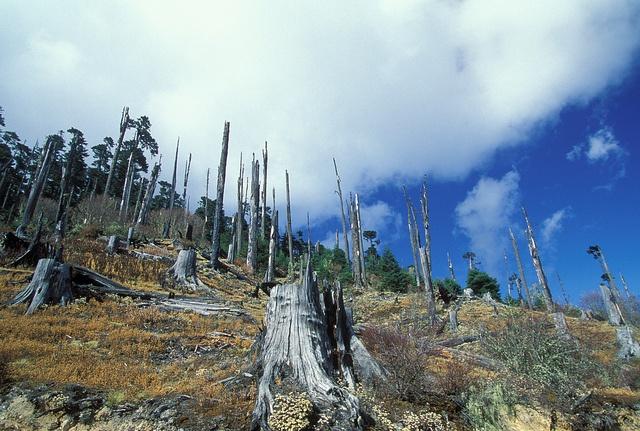

This week, McDonald’s announced a commitment to remove deforestation from its supply chain. The global fast food company’s commitment includes its entire supply chain. However, certain priority products will be focused on, including beef, fiber-based packaging, coffee, palm oil and poultry. The company will start to develop sourcing targets this year.
McDonald’s is the first global fast food chain to commit to removing deforestation from its supply chain. The commitment, according to the Union of Concerned Scientists (UCS), goes “well beyond” commitments by other companies to eliminate deforestation from palm oil supply chains. Going above and beyond its competitors, McDonald’s has committed to eliminating deforestation from all of its supply chain and not just palm oil.
The company's commitment to deforestation outlines what it expects from its suppliers. At the top of the list is no deforestation of primary forests or areas of high conservation value (HCV). Other expectations include:
- No development of High Carbon Stock forest areas
- No development on peatlands and utilizing best management practices for existing commodity production on peatlands
- Respecting human rights
- Respecting the right of all affected communities to give or withhold their free, prior and informed consent for plantation developments on land they own legally, communally or by custom
- Resolving land rights disputes through a balanced and transparent dispute resolution process
- Verifying origin of raw material production
- Supporting smallholders, farmers, plantation owners and suppliers to comply with this commitment
A work in progress
Lael Goodman, analyst with UCS’s Tropical Forest and Climate Initiative, said in a statement that McDonald’s commitment to eliminating deforestation is “still a work in progress.” In order for the fast food chain to “force real change,” it needs to “demonstrate real action in the form of strong individual commodity commitments and on the ground follow through,” Goodman said.
As McDonald’s fleshes out its commitment to eliminate deforestation from its palm oil supply specifically, it will need to address some concerns about palm oil. One of those concerns is increasing the traceability of palm oil to sustainable lands, as UCS pointed out. Most palm oil comes from Indonesia and Malaysia, and both countries have massive deforestation as a result of the palm oil industry.
McDonald’s scored 24.4 out of 100 points on UCS’s recently released 2015 Palm Oil Scorecard, up from 3.3 in 2014. In 2014, UCS launched its campaign to stop palm oil-driven deforestation in Indonesia and Malaysia. The release of its 2014 scorecard marked the beginning of the campaign. Both the public launch of the campaign and private negotiations focused on companies that scored low, which included McDonald’s. The organization then launched a petition, generating thousands of emails to each of the target companies, and bought Facebook ads. Despite all that UCS did, the fast food industry seemed not to pay attention. However, UCS launched a second petition that focused on the fast food industry, and called on its supporters to urge McDonald’s to improve.
The result of all of UCS's hard work is the no-deforestation commitment by McDonald’s. It’s a commitment that the organization calls a “game changer” in a blog post. If the fast food chain lives up to its commitments, other fast food chains might follow.
Image credit: World Bank Photo Collection